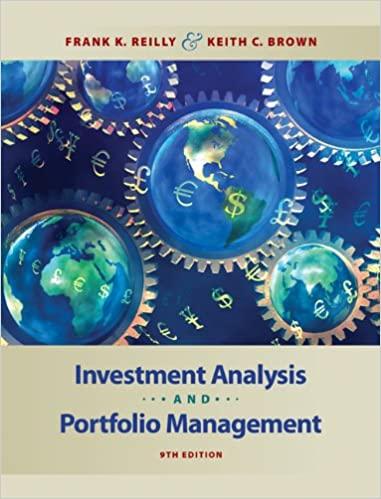Question
The Beta for FLIR Systems Joey Moss, a recent finance graduate, has just begun his job with the investment firm of Covili and Wyatt. Paul
The Beta for FLIR Systems Joey Moss, a recent finance graduate, has just begun his job with the investment firm of Covili and Wyatt. Paul Covili, one of the firm's founders, has been talking to Joey about the firm's investment portfolio. As with any investment, Paul is concerned about the risk of the investment as well as the potential return. More specifically, because the company holds a diversified portfolio, Paul is concerned about the systematic risk of current and potential investments. One position the company currently holds is stock in FLIR Systems, Inc. (FLIR). FLIR Systems designs, manufactures, and markets thermal imaging and infrared camera systems. Although better known for its military applications, the company has divisions that design products for other applications such as automotive night vision, commercial products that require minute temperature difference measurements, recreational marine usage, and firefighting. Covili and Wyatt currently uses a commercial data vendor for information about its positions. Because of this, Paul is unsure exactly how the numbers provided are calculated. The data provider considers its methods proprietary, and it will not disclose how stock betas and other information are calculated. Paul is uncomfortable with not knowing exactly how these numbers are being computed and also believes that it could be less expensive to calculate the necessary statistics in-house. To explore this question, Paul has asked Joey to do the following assignments: QUESTIONS 1. Go to finance.yahoo.com and download the ending monthly stock prices for FLIR Systems (FLIR) for the last 60 months. Be sure to use the adjusted closing price to account for any stock splits and dividend payments. Next, download the ending value of the S&P 500 index over the same period. For the historical risk-free rate, go to the St. Louis Federal Reserve website (www.stlouisfed.org) and find the three-month Treasury bill constant maturity rate. Download this file. What are the monthly returns, average monthly returns, and standard deviations for FLIR Systems stock, the three-month Treasury bill, and the S&P 500 for this period? 2. Beta is often estimated by linear regression. A model often used is called the market model, which is: In this regression, Rt is the return on the stock and Rft is the risk-free rate for the same period. RMt is the return on a stock market index such as the S&P 500 index. i is the regression intercept, and i is the slope (and the stock's estimated beta). t represents the residuals for the regression. What do you think is the motivation for this particular regression? The intercept, i, is often called Jensen's alpha. What does it measure? If an asset has a positive Jensen's alpha, where would it plot with respect to the SML? What is the financial interpretation of the residuals in the regression? 3. Use the market model to estimate the beta for FLIR Systems using the last 60 months of returns (the regression procedure in Excel is one easy way to do this). Plot the monthly returns on FLIR Systems against the index and also show the fitted line. 4. Compare your beta for FLIR Systems to the beta you find on finance.yahoo.com. How similar are they? Why might they be different?
Step by Step Solution
There are 3 Steps involved in it
Step: 1

Get Instant Access to Expert-Tailored Solutions
See step-by-step solutions with expert insights and AI powered tools for academic success
Step: 2

Step: 3

Ace Your Homework with AI
Get the answers you need in no time with our AI-driven, step-by-step assistance
Get Started


